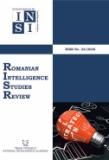THEORETICAL FRAMEWORKS OF CONVENTIONAL DETERRENCE IN THE NAGORNO-KARABAKH CONFLICT
THEORETICAL FRAMEWORKS OF CONVENTIONAL DETERRENCE IN THE NAGORNO-KARABAKH CONFLICT
Author(s): Sergey MinasyanSubject(s): Political Sciences, International relations/trade, Security and defense, Military policy, Peace and Conflict Studies
Published by: National Institute for Intelligence Studies
Keywords: conventional deterrence; Nagorno-Karabakh conflict; South Caucasus; regional security; conflict resolution;
Summary/Abstract: Deterrence is both a theoretical branch of the theory of international relations and security studies, and a practical strategy used by states (and sometimes non-state actors) to manage conflicts and crises. Given the special role it plays in regional and international security issues, military, and politics, deterrence has long been an object of interest to scholars as well as the military, politicians, and diplomats. To analyse deterrence in regional conflicts, one must begin with a brief typology of the elements and mechanism of deterrence in general, and only then see how they can be applied to regional conflicts. Deterrence can rely on conventional weapons or weapons of mass destruction (WMD). In regional conflicts without direct involvement of nuclear superpowers, the most applicable scenario is that of deterrence with conventional weapons, i.e. conventional deterrence. However, the use of conventional deterrence in regional conflicts has not been covered by political science in great detail. Therefore, from academic and practical perspectives, it is important to clarify the conceptual aspects for a more precise theoretical understanding and subsequent discussions applicable to some regional conflicts, including the Nagorno-Karabakh conflict.
Journal: Romanian Intelligence Studies Review
- Issue Year: 2020
- Issue No: 24
- Page Range: 75-92
- Page Count: 17
- Language: English

